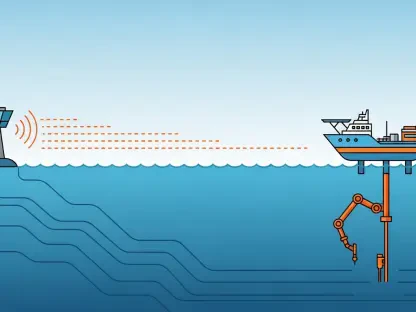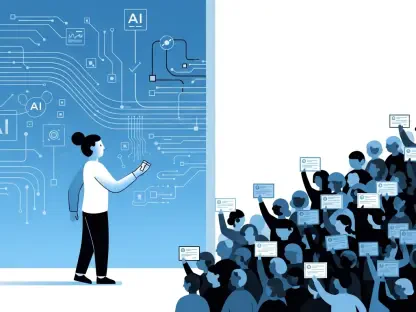AI tools are undoubtedly useful for companies around the world, and most have already adopted them in the hope of harnessing the power of these new technologies to drive their business forward. Recent advancements have made AI tools more widely available, and easier to use, creating a global trend in the adoption and integration of these technologies.
Moreover, people everywhere have also started using different AI tools on a daily basis, adding to their popularity. But while AI-based tools are popular, researchers around the world have started to question their impact on both the economy and the environment.
According to the International Monetary Fund (IMF), the rise of artificial intelligence or AI has taken the world by storm, making people everywhere experience both enthusiasm and fear when thinking about its future integration. Economists, researchers, and policy-makers alike have started to analyze its potential impact on different aspects of society. While the IMF admits its economic repercussions are still difficult to predict, it also goes on to declare that “AI will ripple through economies in complex ways.” Just like the global economy, the environment is also believed to be disrupted by the rapid rise of AI.
How could AI impact the environment?
In order to examine the impact AI tools could have on the environment, we must first understand the technology behind it, and the resources needed to use it. AI aims to simulate human intelligence in machines by programming them to think like humans and mimic their actions.
While AI operates according to any number of techniques and systems, the technology begins with simple rule-based systems that give way to more complex machine learning models. However, designing large AI models, especially those based on deep learning, is computationally expensive. AI training in particular requires significant computing power.
Not only does it cost millions to train some AI models, but it could also come at a big cost to the environment. According to the MIT Technology Review, AI models like OpenAI’s GPT series or Google’s BERT are expensive to train, and they also produce vast amounts of carbon dioxide (CO2) during the training.
The article cites data from the University of Massachusetts Amherst and demonstrates that training just one big AI model can generate as much CO2 as driving a car five times across its life cycle. After training, integrating these models in apps and services is also energy-intensive. To sum up, the energy needed grows rapidly as AI adoption scales, and so does its carbon footprint.
While researchers have always known that the AI revolution will probably come with an important environmental cost, recent studies like the one conducted by the University of Massachusetts Amherst have surpassed their worst fears. “Neither I nor other researchers I’ve discussed them with thought the environmental impact was that substantial,” computer scientist Carlos Gómez-Rodríguez explained.
Reducing the environmental cost
It is necessary to reduce the environmental burden of AI, especially due to the high energy consumption and carbon footprint created while training and running large AI models. Thankfully, there are a few strategies available to reduce the environmental impact of AI without preventing technological advancements.
Developing better algorithms
Improving the efficiency of algorithms is one of the best ways to lessen AI’s environmental footprint. Older AI models, including deep learning types, are computation-needy. However, newer and more efficient algorithms that can perform the same with less do exist. Strategies like model pruning, distillation, and quantization can reduce energy consumption with minimal loss of prediction accuracy. AI systems will be able to undertake quicker data processing while consuming less power if these newer methodologies are adopted.
Using specialized hardware
Developing better hardware is another critical part of lowering the energy needed for AI training and use. Traditional CPUs (Central Processing Units) and GPUs (Graphics Processing Units) are not always designed for AI workloads, which results in inefficient energy consumption.
This has prompted companies such as Google, NVIDIA, and Intel to develop tailor-made AI hardware (such as TPUs and more power-efficient chips). These custom chips consume far less energy to train and deploy AI models, thereby substantially decreasing their carbon cost.
Adopting renewable energy
The amount of power consumed by data centers, where AI computations are often carried out, is vast. Reducing the environmental impact of AI could mean shifting to renewable sources such as solar, wind, and hydro-power as means of providing power to these data centers.
Tech giants such as Google, Microsoft, and Amazon aspire to be carbon-neutral or even carbon-negative on the data center front, and they are already investing in renewable energy infrastructure. To sum up, the rise of AI is already making big technology companies look for clean energy sources.
Transferring Learning
Instead of building big AI models from the ground up every time, experts can use transfer learning or share models that are already trained. Transfer learning allows developers to take a model that is good at one job and tweak it for a new similar job. This cuts down on the need for heavy-duty computing. It’s a win-win: it saves energy and it also speeds up AI progress. Tech companies will not need as much data or time to train their new models this way.
Understanding the environmental impact
The first and probably the most important step in reducing the environmental impact of AI is to correctly assess its current costs. The good news is that, according to The Guardian, world leaders plan to focus on how AI affects the environment and the job market at the upcoming AI summit. One idea now on the table is to score AI companies on their environmental impact, while other important topics will probably include the need for transparency and analyzing AI’s existential risks.
Final Thoughts
AI tools can harm the environment because they need a lot of energy during training and use, but tech companies can take several steps to reduce their negative effects. By putting more effort into making algorithms that use less energy and better hardware, using clean power sources, and sharing knowledge, we can lower AI’s negative impact on the environment. At the same time, AI can also help us tackle environmental problems. AI tools can be used to make renewable energy systems work better, cut down on emissions from shipping and transport, and support climate change research.









